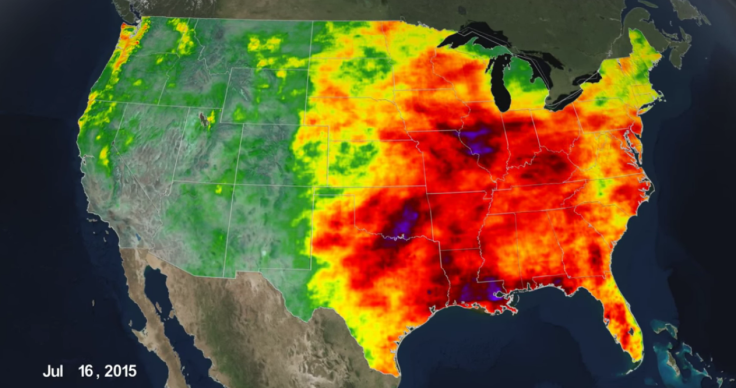California Missed Out On An Entire Year's Worth Of Rainfall Since 2012, NASA Study Reveals

California -- currently facing one of the worst droughts on record -- has accumulated a rainfall “deficit” of about 20 inches since 2012, according to a new NASA study. In other words, the difference between actual rainfall in the state and the rainfall expected on average is now equivalent to a whole year's worth of precipitation.
Although California has typically seen wide annual fluctuations in rainfall, the wet years balanced out the dry ones during non-drought periods. However, the latest precipitation data gathered by NASA shows that California accumulated a deficit of almost 13 inches between 2012 and 2014, and another 7 inches during the 2014-2015 wet season.
According to the study, this lack of rains can be attributed to the absence of “atmospheric rivers” -- narrow, water vapor-rich jets that travel through the atmosphere, typically from west to east -- over the eastern Pacific Ocean.
“When they say that an atmospheric river makes landfall, it’s almost like a hurricane, without the winds. They cause extreme precipitation,” lead author Andrey Savtchenko from NASA’s Goddard Space Flight Center in Greenbelt, Maryland, said in a statement Thursday. By contrast, the El Niño-Southern Oscillation -- a naturally occurring cycle that causes fluctuations in ocean temperatures by sloshing water around in the equatorial Pacific -- accounts for only 6 percent of California’s rainfall.
Since 2011, a persistent high-pressure region over the eastern Pacific has prevented the moisture-rich air carried by atmospheric rivers from reaching California, the study, which used data collected using NASA’s Tropical Rainfall Measuring Mission satellite, found.
The absence of atmospheric rivers, which are informally known as the “Pineapple Express,” is believed to be the main factor behind the ongoing drought in the state.
As a result of the drought, statewide measurements on April 1 showed that the water content of California’s snowpack -- a major source of water for reservoirs during the summers -- fell to 5 percent of the normal for that date, making it the lowest on the record, which dates back to 1950. Moreover, the drought has also exacerbated wildfires in the state.
“Drought has happened here before. It will happen again, and some research groups have presented evidence it will happen more frequently as the planet warms,” Savtchenko said, in the statement. "But, even if the climate doesn’t change, are our demands for fresh water sustainable?”
© Copyright IBTimes 2024. All rights reserved.






















